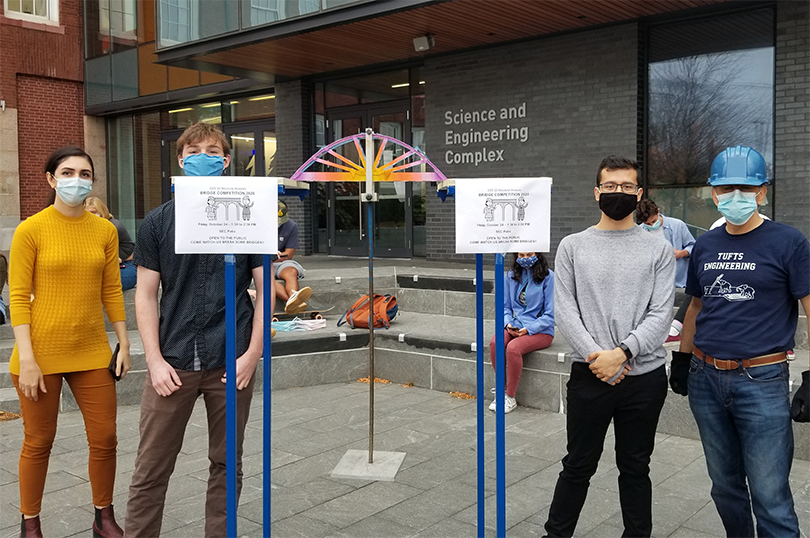Bridge model testing for design verification

Every year, teams of engineering students in Professor Masoud Sanayei's structural analysis course prepare for a competition that's now tradition in the Department of Civil and Environmental Engineering. After spending the semester studying the application of mechanics to the analysis of structures, it’s time for student groups in CEE22, Structural Analysis, to put their knowledge to the test. The objective experiment is to help students better understand structural behavior of trusses for preventing bridge failures.
The win goes to the team that designs and builds the bridge – constructed from simple materials like basswood and Elmer's glue – most successful in three criteria: (1) carrying the heaviest load, (2) maximum efficiency, defined as highest load-to-weight ratio, and (3) the most aesthetically pleasing design. Students learn critical skills through the competition, especially gaining new understanding of structural behavior in studying how and why their bridges failed and how failures could have been prevented.
Each team created a 3D computer model of their 20 inch long bridge and analyzed for the bar forces. Each basswood truss member was designed either for internal tensile or compressive forces as deemed necessary, as well as connections which were designed for the shearing forces.
Usually held in the lobby of Anderson Hall and always open to any and all interested parties, the annual bridge competition moved outdoors this year. Students gathered on the patio of the Science and Engineering Complex on a sunny fall day to have their bridges put to the test by Professor Masoud Sanayei and Teaching Assistant – and PhD student – Nasim Partovi Mehr.
The heaviest load this year was carried by a bridge built by Miguel Rothe, E22, and Matt Paragamian, E22, which carried 83 kilograms (182.6 pounds) despite weighing only 79 grams (2.79 ounces) itself – a remarkable load-to-weight ratio of 1,050 times. Results like these signify the value of knowledge in structural engineering for building safe and efficient bridges.
Department:
Civil and Environmental Engineering